Tackling Climate Change 
As climate change gains prominence as one of the most important issues on the global agenda, the aviation industry will continue to face increasing scrutiny on actions to mitigate its environmental footprint.
With global air travel returning to pre-pandemic levels, AirAsia's overall carbon emissions rose from 2.6 million tCO₂e in 2022 to 5.4 million tCO2e in 2024 - more than doubling over two years.
Roadmap Towards CO2 Reduction
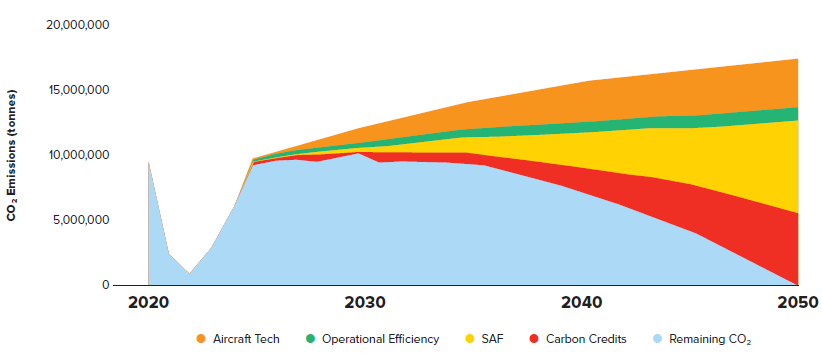
Capital A is fully aligned with global ambition to achieve net zero by 2050. Our net zero roadmap focuses on the four pathways for AirAsia to converge to our long term emissions reduction goal.
Our climate strategy builds on AirAsia's strong foundation of operational efficiency, which has earned us recognition as one of the world's lowest carbon intensity airlines. As operations stabilise post-pandemic, we continue to reduce our carbon intensity below 2019 levels through the ongoing implementation of fuel-saving and efficiency measures.
1. Fleet Management
AirAsia's fleet comprises three models of the Airbus A320 family. Our fleet remains relatively young at 11.3 years.
Fleet age 11.3 years
 3.3 years younger than
3.3 years younger than
APAC average
AirAsia Group reaffirmed its commitment to fleet modernisation with the signing of an amendment agreement with Airbus in October 2021, securing deliveries of the higher-capacity, fuel-efficient A321neo through to 2035.
Our fleet renewal strategy aims to fully replace all existing A320 aircraft with A321neos by 2035. Each A321neo features a 236-seat all-economy configuration, enabling a reduction in carbon intensity per seat of at least 20% compared to older models. Further weight reduction is achieved through the adoption of lightweight Mirus seats, saving up to 287 kg per A320 and 375 kg per A321neo.
In 2024, AirAsia added nine new A321neos and one A320 to support both fleet replacement and network growth.
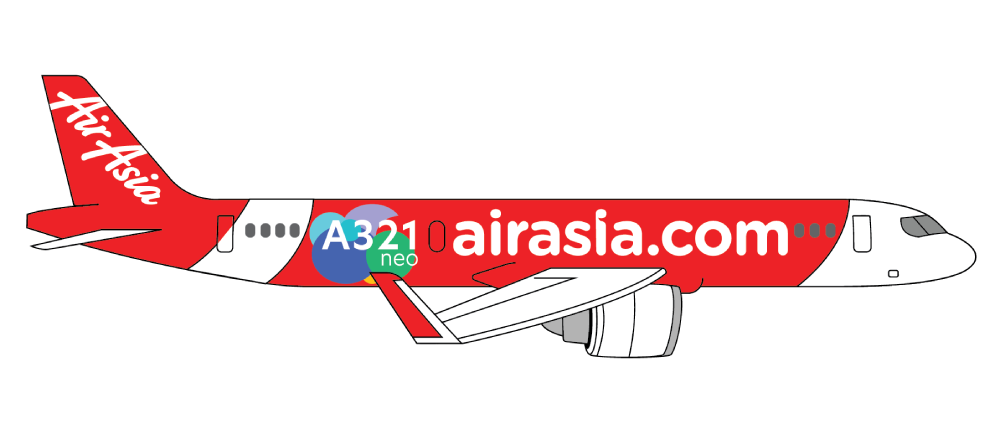
-24%
CO2 per seat
Compared to A320ceo
362
orders
Progressive delivery from 2024
50%
NOx reduction
Compared to current industry standards
~50%
reduction
In noise footprint
2. Operational Eco-Efficiency
To complement our fleet strategy, AirAsia maintains an industry-leading fuel efficiency programme. Our fuel efficiency team managed over 20 efficiency projects to reduce fuel consumption and carbon emissions.

Up to
123kg
Fuel savings per flight
Up to
389kg
CO2 savings per flight
In total, our fuel efficiency projects enabled us to avoid 129,189 tonnes of CO2 in 2024 which also delivered significant cost savings.
Emissions avoided

129,189
tonnes
> 2 million
trees planted
Total amount
invested
=
US$1.2 million
Total anticipated annual
cost savings
=
US$34.3 million
In 2024, AirAsia introduced several new initiatives to decarbonise the air and ground:
- Combo Units - AirAsia began trailing four Combo Units — dual-function ground equipment that powers and cools the aircraft while on the ground. Once fully deployed, these units are expected to reduce Scope 1 emissions in Malaysia by 20,000 tonnes of CO2 annually.
- 400' Thrust Reduction Altitude - AirAsia rolled out implementation of the 400' TRA across all its operating hubs.
- e-Flight Plan - To advance its paperless cockpit initiative, AirAsia adopted e-Flight Plans through Airbus's Mission+ system. This reduces paper usage by an estimated 3 million sheets saved annually, while also reducing aircraft weight.
- MoU with Airbus - AirAsia signed a MoU with Airbus to jointly advance air traffic management improvements in Asean. The collaboration explores adapting proven solutions from the Single European Sky ATM Research (SESAR) project to enhance efficiency and reduce emissions in regional airspace.
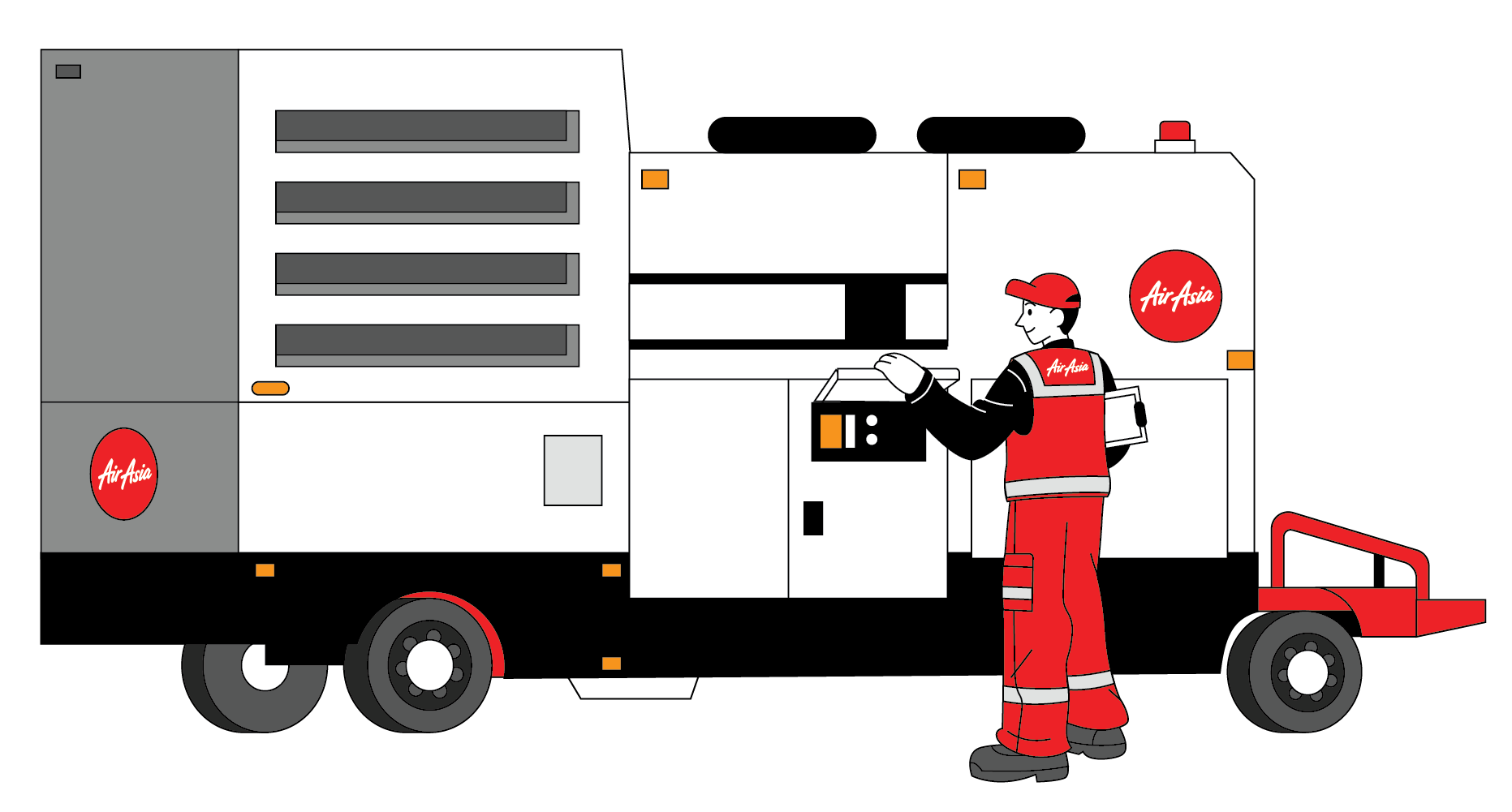
3. Carbon Offsetting
AirAsia has met two key requirements under ICAO's Carbon Offset and Reduction Scheme for International Aviation (CORSIA). In April 2025, all our airlines submitted independently verified carbon emissions reports for the year 2024. As global emissions from international aviation remained well below the 2019 CORSIA baseline level, none of our airlines were required to offset our carbon emissions.
AirAsia plays a key technical role in ICAO's Committee on Aviation Environmental Protection (CAEP) working group on CORSIA, providing critical analysis of global growth scenarios. This enables AirAsia to accurately forecast the airline group's compliance and offsetting requirements based on projected growth through 2030.
Additionally, AirAsia serves as the Chair of Malaysia's CORSIA Task Force, appointed by CAAM, leading efforts to deepen Malaysia's understanding of carbon markets and offsetting mechanisms. AirAsia also developed a net zero model to estimate the potential market size for aviation offsetting within Malaysia and the broader ASEAN region.
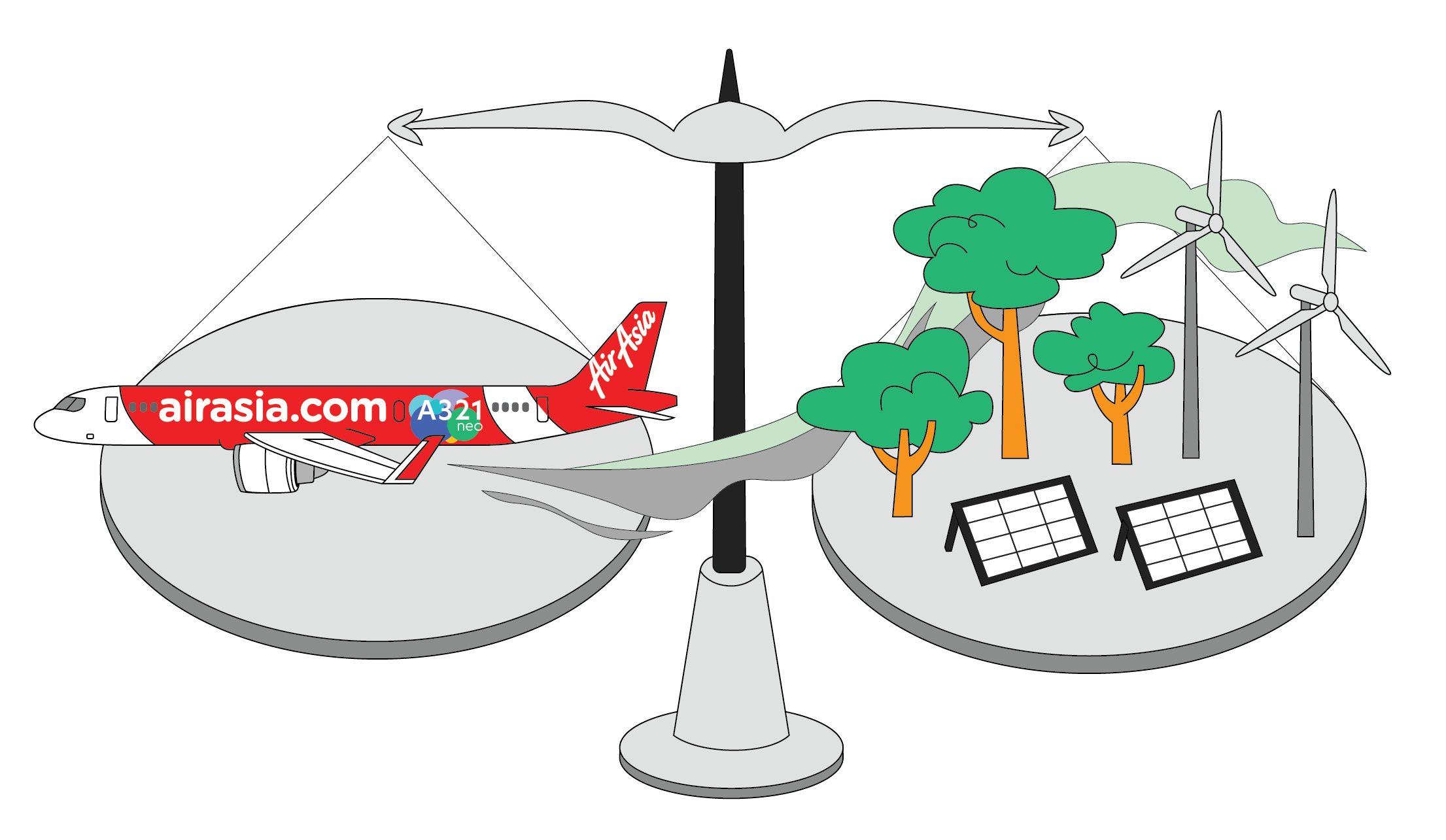
We expect carbon offsets to deliver a higher proportion of our emissions reduction at the early stages of our net zero journey before tapering down as in-sector solutions become more accessible.
4. SAF Strategy
The utilisation of SAF is projected to be the key strategic in-sector solution towards AirAsia's net zero roadmap. We expect that the importance of SAF utilisation will grow in our decarbonisation journey in the long-term as it can cut the lifecycle GHG emissions of jet fuel by up to 80%.
Our main obstacles to SAF utilisation remain its high price and non-availability at airports in the countries our AOCs operate in. To gain a broader overview of SAF production and distribution plans in Asean, we participated in multiple engagements with civil aviation authorities, fuel suppliers, aircraft manufacturers and government authorities in the region.
In 2024, AirAsia began collaborating with Airbus to explore decentralised SAF production in Southeast Asia, focusing on alternative feedstocks and emerging technologies. As part of this effort, both parties engaged with key regional producers and feedstock suppliers to assess the supply landscape and support the development of a regional SAF network. AirAsia also actively contributed to technical meetings and workshops organised by civil aviation authorities to support national SAF roadmap development.
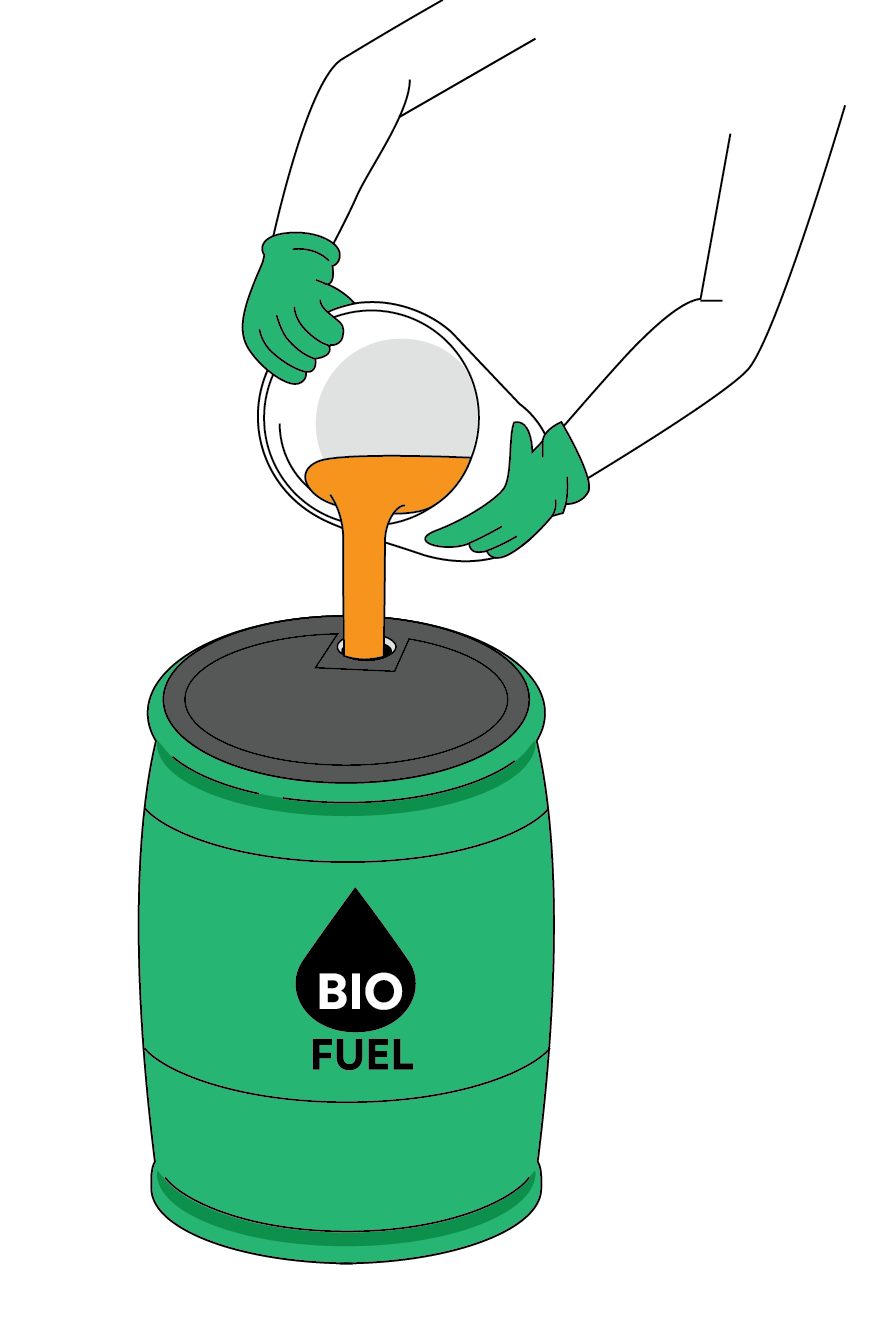
5. Greenhouse Gas Inventory
To improve our greenhouse gas monitoring, we expanded our boundary to include Scope 3 indirect emissions from our jet fuel production, employee commute, business travel and other sources in addition to our Scope 1 and Scope 2 emissions. In 2024, our greenhouse gas inventory amounted to 7,318,208 tCO2e where the increase was due to number of flights reaching 84% of pre-pandemic levels.
Scope 1 Emissions
(Flight+ground operations)
 ~11%
~11%
compared to 2023
(2023: 4,876,564 tCO2e)
Scope 2 Emissions
(Electricity)
 ~25%
~25%
compared to 2023
(2023: 9,972 tCO2e)
Scope 3 Emissions
(Cloud services, jet fuel production, business travel, employee commute, airasia services)
 ~58%
~58%
compared to 2023
(2023: 1,179,003.5 tCO2)
In addition to greenhouse gas monitoring, we continue to improve efficient management of our resources through various efforts (staggered switching for power intense equipment, scheduled light usage by zone, low-water use facilities) while we return to normal operations. Both water and electricity consumption increased due to the return of Allstars to our offices.
Electricity Consumption
 20%
20%
compared to 2023
(2023: 15,083 MWh)
Water Consumption
 5%
5%
compared to 2023
(2023: 102,067m3)
Task Force on Climate-related Financial Disclosures (TCFD)
On top of our robust reassessment of climate strategy, our climate management is further enhanced by alignment to the TCFD recommendations. In 2022, we became an official supporter of the TCFD and identified our business risks and opportunities, the potential financial impact of climate change, and mitigation strategy.

Waste Management
Capital A strives to reduce as far as possible all waste generated from our operations. We adopt a circular economy approach in our waste management encompassing the 3R principle to reuse, reduce and recycle resources responsibly.
Recycling
28,394kg
office waste recycled
Upcycled materials
4,839
lifejackets upcycled into new products since 2017
RM432,000 revenue gained
Food Waste
 6%
6%
compared to 2023
(2023: 765,416kg)
Sustainable Packaging Solutions

As part of our commitment to cut down on single-use plastics, Santan has introduced more sustainable in-flight packaging made from polylactic acid (PLA), derived from sugarcane and cassava.
The new packaging is fully compostable and is expected to:

~500 tonnes
of CO2 emissions


